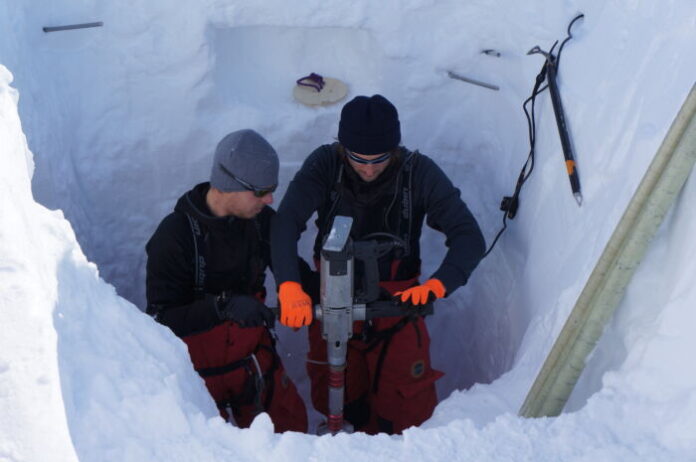
Understanding the reasons for the sharp increase in temperatures in the Arctic compared to the rest of the planet, the so-called “Arctic amplification”, investigating its complex mechanisms. This is the goal of the ECAPAC and SENTINEL projects, the first coordinated by ENEA and the second by the Institute of Polar Sciences of the National Research Council (Cnr-Isp), funded by the Arctic Research Program (PRA). In particular, researchers will study the role of sea ice, precipitation and the chemical processes of bromine and mercury, important indicators of ice variation.
The ECAPAC [1] project aims to investigate precipitation and the consequent effects on snow and ice cover that trigger the complex mechanisms underlying Arctic amplification. Coordinated by ENEA in collaboration with the Sapienza University of Rome, the National Institute of Geophysics and Volcanology (INGV) and the Lamont-Doherty Earth Observatory of the Columbia University Earth Institute, it is among the first six projects funded by the PRA 2018/2020 .
Specifically, from the Thule base (76.5 ° N, 68.8 ° W) in Greenland, in situ and remote sensing measurements will be carried out and, moreover, for the study of precipitation, new instrumentation will be installed, with a key role in ground-based observations, for identify and reduce the uncertainties of climate models but also for the validation and correction of satellite data.
“The Arctic is a fragile area, but absolutely strategic for monitoring the health of our planet; for this reason it is essential to guarantee its protection even with respect to the uncontrolled exploitation of the huge resources present “, highlights Alcide di Sarra who represents ENEA in the Scientific Committee for the Arctic. “Hence the importance of preserving and increasing national funding for research programs in the Arctic, an enhancement of international scientific cooperation and free access to available research infrastructures, in line with the objectives of the European Union”, he adds. .
“For a better understanding of the developments taking place, moreover, with a single research approach, we will systematize data and analyzes developed over the years by ENEA both in the Arctic and Antarctica, among the areas of the Earth most sensitive to climate change”, underlines the scientific manager of the project, Virginia Ciardini, ENEA researcher of the Laboratory of Observations and Measurements for the Environment and Climate.
The SENTINEL project instead aims to study the role of sea ice in Arctic amplification and its impact on the atmosphere, in particular on the chemical processes of bromine and mercury. Participants in the project for Italy are ENEA, Ca ‘Foscari University of Venice and the Institute of Atmospheric and Climate Sciences (Cnr-Isac) and the Institute of Polar Sciences (Cnr-Isp) for the CNR last in the role of coordinator. With a three-year duration, SENTINEL was first among the 6 projects financed by the PRA.

As part of the project, two ice cores from two different arctic regions will be analyzed, one in the Svalbard islands (Holthedalfonna glacier at 1,150 m high, coordinates 79.15 N, 13.38 E) and the other in the eastern part of the Greenland Plateau ( EGRIP site, 2,660 meters, 75.63 N, 35.99 W). The information obtained on the variability of the quantities of bromine and mercury in the two areas will be compared with satellite data on the extent of sea ice and with the snow accumulation measurements taken “in the field”.
Furthermore, atmospheric transport models will be used to understand the possible provenance areas of the two chemical species. As part of the project, ENEA will be mainly engaged in the identification of source areas through atmospheric transport models and in the comparison between snow precipitation data and those obtained from the two ice cores.
“These studies will allow us to understand the relationship between the dramatic reduction in the extent of sea ice, documented in the last four decades, and the chemical processes in the atmosphere linked to the bromine and mercury cycle”, underlines Claudio Scarchilli, ENEA researcher at the Laboratory of Observations and measures for the environment and climate. “This will allow us to better understand not only how the climate is changing, but also how these sudden changes affect the chemical cycle of bromine and mercury, the latter considered toxic to the Arctic ecosystem,” he concludes.



































